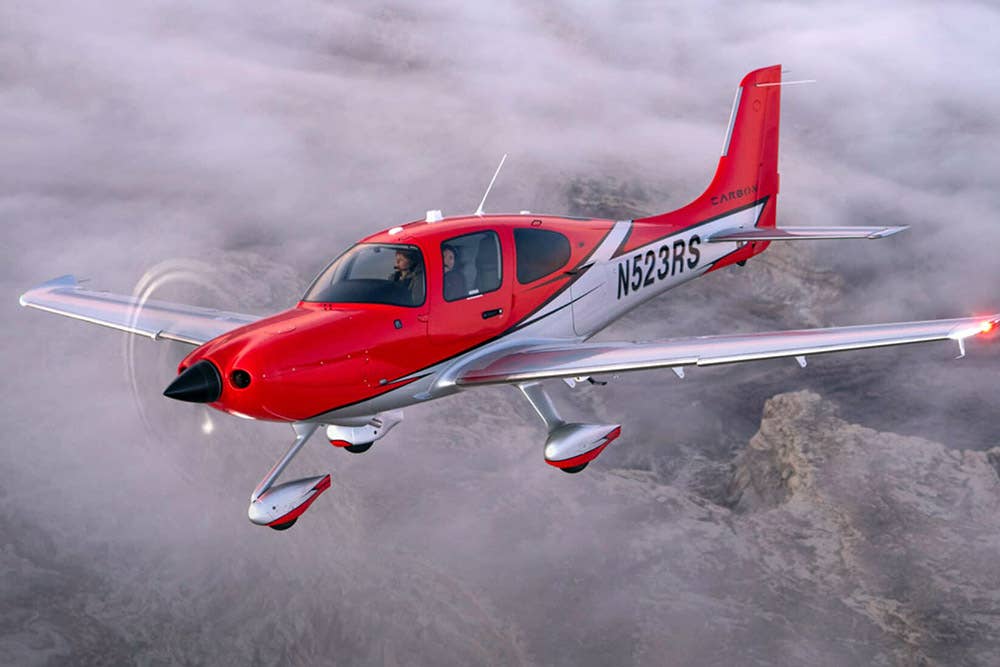NTSB to Cirrus: Address Fuel Boost Pump Issues with SR22T
Cirrus, SR22T, fuel pump, boost pump, Functional Hazard Assessment, fuel flow, service advisory, NTSB, FAA

According to the Cirrus pilot’s operating handbook for the SR22T, the electric fuel boost pump has two activation settings. [Courtesy: Cirrus Aircraft]
After investigating six takeoff accidents involving uncommanded loss of engine power in Cirrus SR22T, the National Transportation Safety Board is recommending the aircraft manufacturer conduct a Functional Hazard Assessment (FHA) to address the issue and mitigate the risk.
According to a report issued on April 12 by the NTSB, the six accidents were the result of excessive fuel flow in the SR22T, which caused engine failure during climb out. The accidents, which happened between 2017 and 2019, resulted in three deaths and nine persons injured.
"Cirrus Aircraft personnel are fully supporting these investigation activities.”
Cirrus Aircraft statement
During the accident investigations, the NTSB removed the recoverable data monitors from the accident aircraft and determined that in each case the aircraft indicated an excessively high fuel flow rate, ranging from 42.2 to 50.1 gallons per hour, just before the engine lost power.
According to the Cirrus pilot’s operating handbook for the SR22T, the electric fuel boost pump has two activation settings:
- “Boost,” which should be used for takeoff, climbout, and when switching fuel tanks
- “High Boost/Prime,” which should be used for engine start and to avoid vapor lock above 18,000 feet.
According to information from Cirrus, when the pump is in the “Boost” mode, it can deliver 19 gph. In the “High Boost/Prime” position, the electric fuel pump can deliver 42 gph.
The NTSB report stated that in two of the accidents, the pilot had incorrectly selected the “High Boost/Prime” mode, resulting in the excessive fuel pushed to the engine. The excessive fuel overloads the engine, similarly to the way chugging a beverage makes a person choke.
A third investigation determined that an improperly adjusted slope controller and fuel pump were to blame for the loss of engine power.
Cirrus Takes Steps to Mitigate Risk
In May 2018, Cirrus issued service advisory (SA18-02) for the SR22T, reminding pilots that the intended use of the “High Boost/Prime” function, per the POH, is only used for engine start and suppressing vapor lock in flight above 18,000 feet with warm or hot fuel.
The SA continues: "The fuel pump should be set to ‘Boost’ for takeoff, climb, landing and when switching fuel tanks, and that the fuel flow should never exceed 41 gallons per hour at 36.5 inches of manifold pressure, as higher fuel flow rates may result in a rough running engine or loss of power."
In addition, Cirrus implemented software changes to prevent improper use of the electric fuel boost pump on the SR22T, which features Garmin’s Perspective or Perspective Plus avionics suite.
Pilots and aircraft owners were notified of the software change in a service bulletin on a controlled lockout feature for in-service SR22Ts.
The lockout feature was designed to block the use of the “High Boost/Prime” function until the airplane reaches a pressure altitude of 10,000 feet to prevent a loss of engine power at low altitude.
However, Cirrus received pilot reports that the lockout function was not operating as intended, and in January 2019 Cirrus issue Service Advisory SA19-01 stating "Use of HIGH BOOST/PRIME fuel pump mode in flight below 10,000 feet is not recommended and should be avoided" and "until a software update is released to address this condition, the use of HIGH BOOST/PRIME fuel pump mode should only be required in flight above 18,000 feet on hot days with warm of hot fuel to maintain fuel flow in the green arc or to suppress vapor formation."
FLYING reached out to Garmin for comment on the issue, but our request for information was not immediately returned.
NTSB Recommendations
The NTSB recommends that Cirrus conduct an functional hazard assessment to identify the causes, effect and severity levels for the SR22T during takeoff and climb phases of flight, and to use this information to identify mitigating actions such as design modifications or changes in procedures for the operators of the aircraft.
In addition, the NTSB is asking the FAA to require implementation of proper mitigating actions to prevent power loss during excessive fuel flow and that the FAA review the FHA recommendations made by Cirrus.
Cirrus Aircraft issued a statement responding to the NTSB report, noting that because the investigation is active: "Cirrus Aircraft cannot comment on the particulars of the aircraft incidents or participate in any speculation as to the cause or the explanations for fuel flow in each case.
"Cirrus Aircraft personnel are fully supporting these investigation activities,” the statement continued. “Cirrus Aircraft has shown that all configurations of the Model SR22T and its Continental TSIO-550-K engine are compliant with 14 CFR Part 23 and meet all applicable safety standards. All SR22T aircraft manufactured by Cirrus Aircraft meet all airworthiness requirements when they receive their original airworthiness certificate. Any SR22T that is operated in accordance with the approved Pilot Operating Handbook and has been maintained in accordance with the Cirrus Airplane Maintenance Manual will continue to meet all airworthiness requirements with no unsafe conditions.”

Sign-up for newsletters & special offers!
Get the latest FLYING stories & special offers delivered directly to your inbox






